Find out how to know when a peach is bad and needs to be tossed. Also when to know when you can salvage a peach that is not looking it's best.
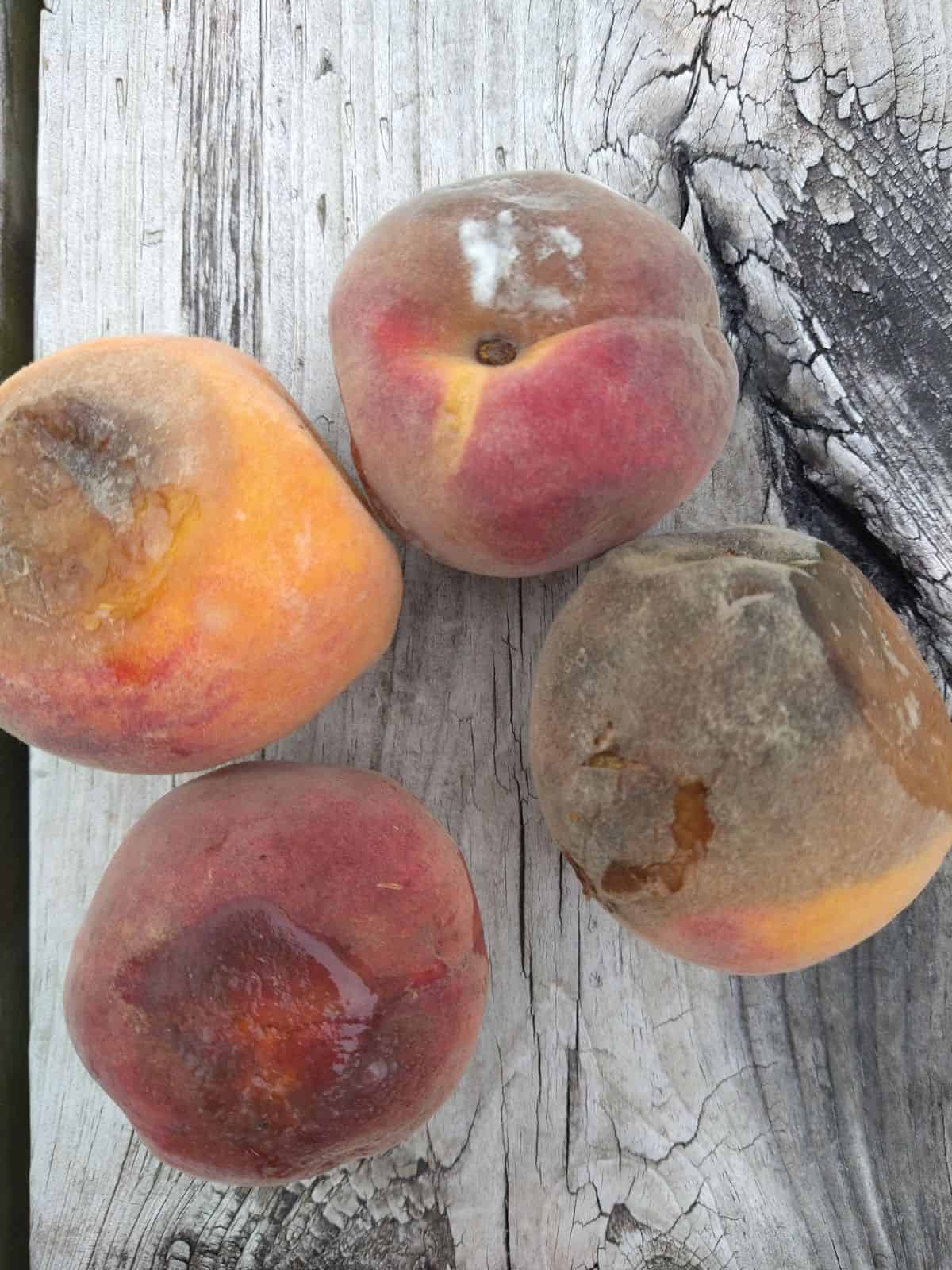
There is nothing like the frustration of waiting for a peach to ripen up than to open the drawer where you are storing them to find out they are going bad instead.
Such a bummer!
At this point you have to decide what to do. Can you save those peaches? Or do just need to cut your losses. Let us tell you when you need to toss or keep your peaches.
Jump to:
🩹 Bruised
A peach that has a bruise or two on them are still good to eat. Most of the time you can still eat the bruised spot, it just won't have that best texture. Most people choose to just cut off the bruises.
If you are making jam, I don't worry about it at all. Just cut up the peaches for your jam and proceed as normal. Some orchards will sell bruised peaches as seconds. They are sold at a reduced price. A great way to get a lot of peaches for jam or pie without spending a lot of money.
Verdict - Keep! Eat or cut around the bruises
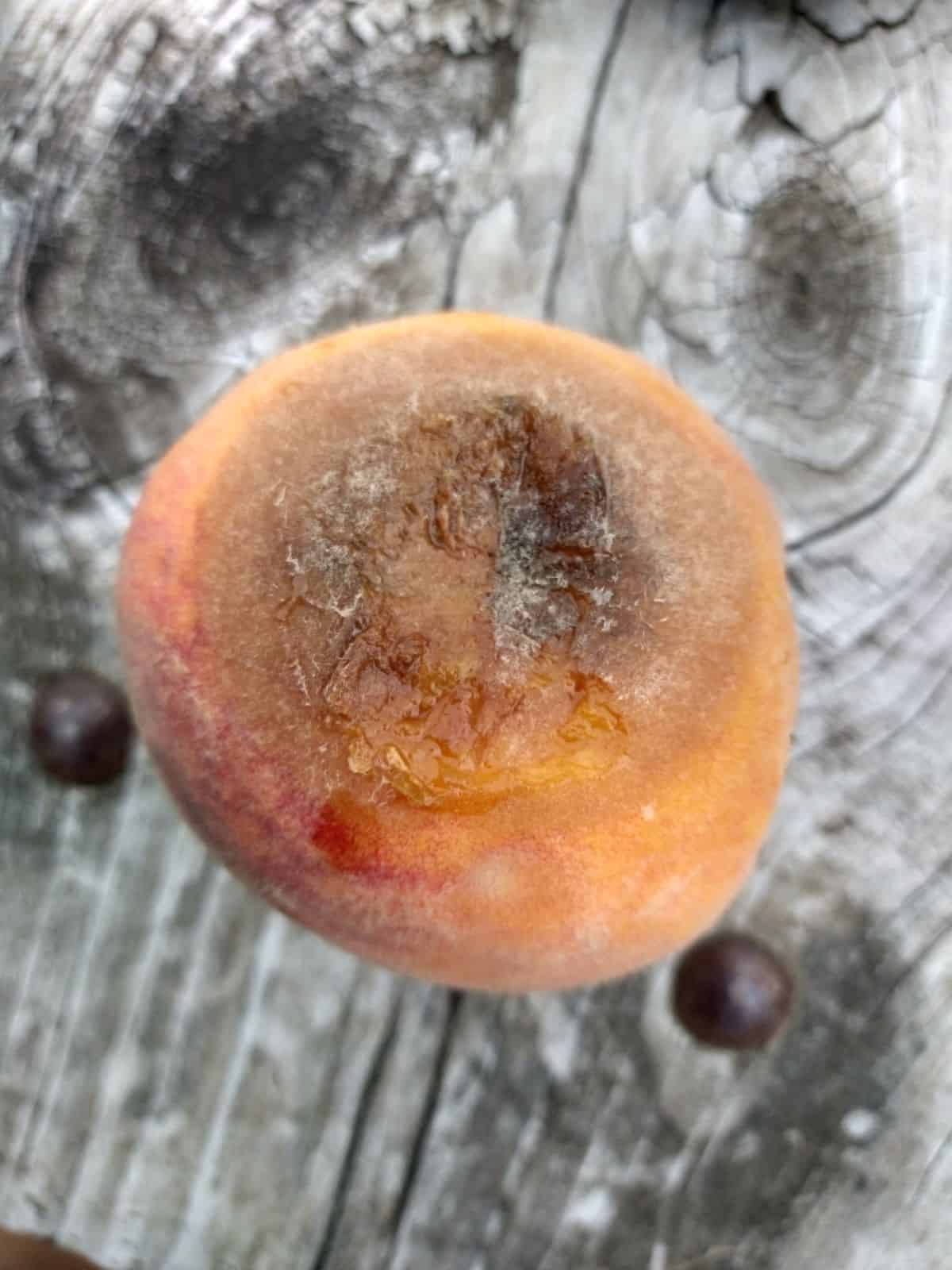
❓ Soft Spots
When your peach has more than a bruise, it's a soft spot. The peach skin is damaged and it feels soft and wet. Mold is soon to be growing but for now you can still cut out this part and eat the rest of the peach.
These kinds of peaches need to be used or refrigerated immediately or they will attract fruit flies.
Verdict - Keep! But use fast or store in the fridge. Cut off the bad part when ready to use.
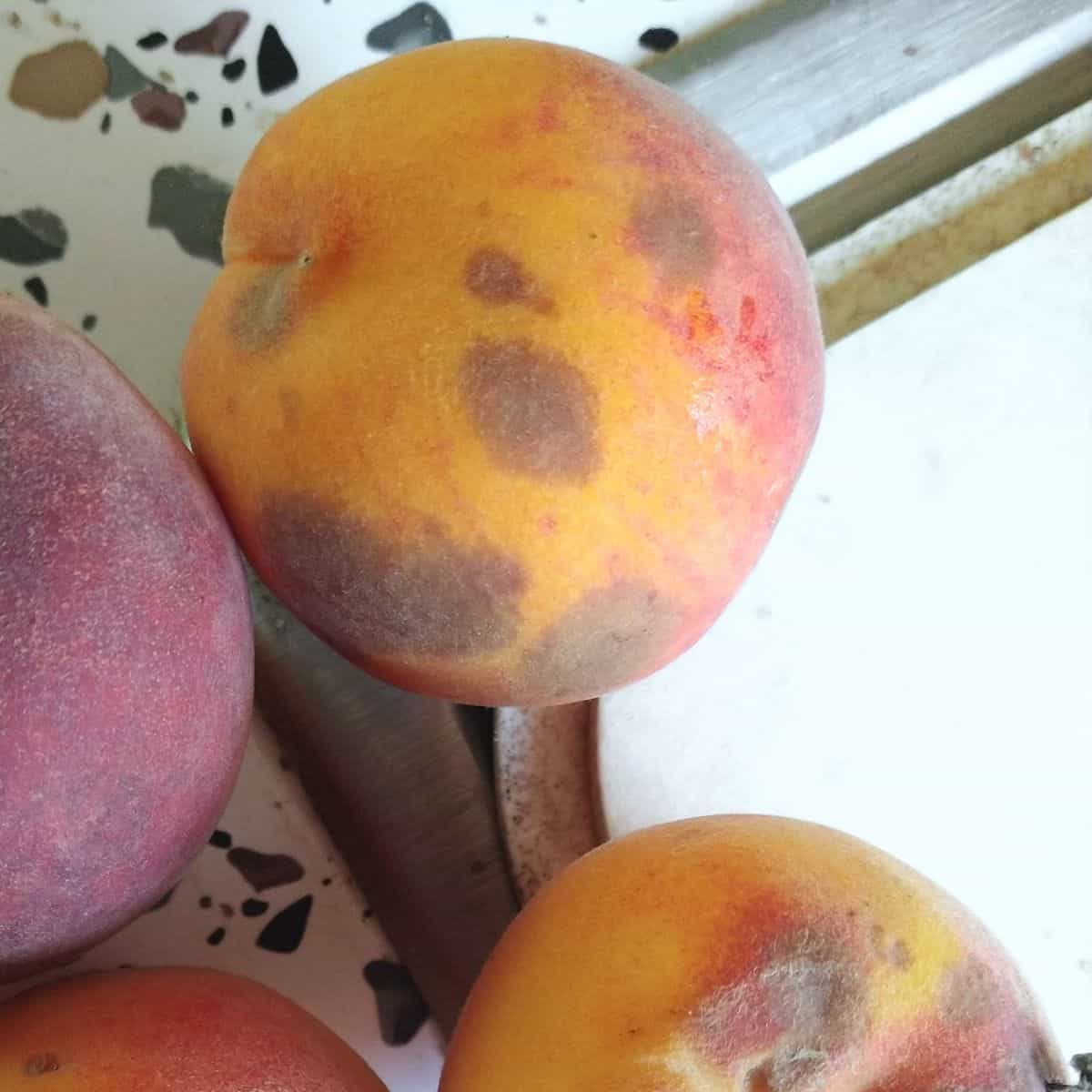
🟤 Brown Spots
Now things are getting a bit trickier. Brown spots on the fruit can be a sign of disease in the orchard the fruit was grown in. Often these spots are appearing before the fruit is truly soft and ripe. The fruit will most like rot before it is ever as soft as you would like.
Best thing to do is to put in the fridge and come up with a way to use them. When I had this happen I cut off what I could and made peach applesauce. I didn't really want to eat them as the flavor wasn't good. Also didn't want to just waste them all.
Verdict - Keep! Immediately put in fridge and come up with a way to use the peaches.
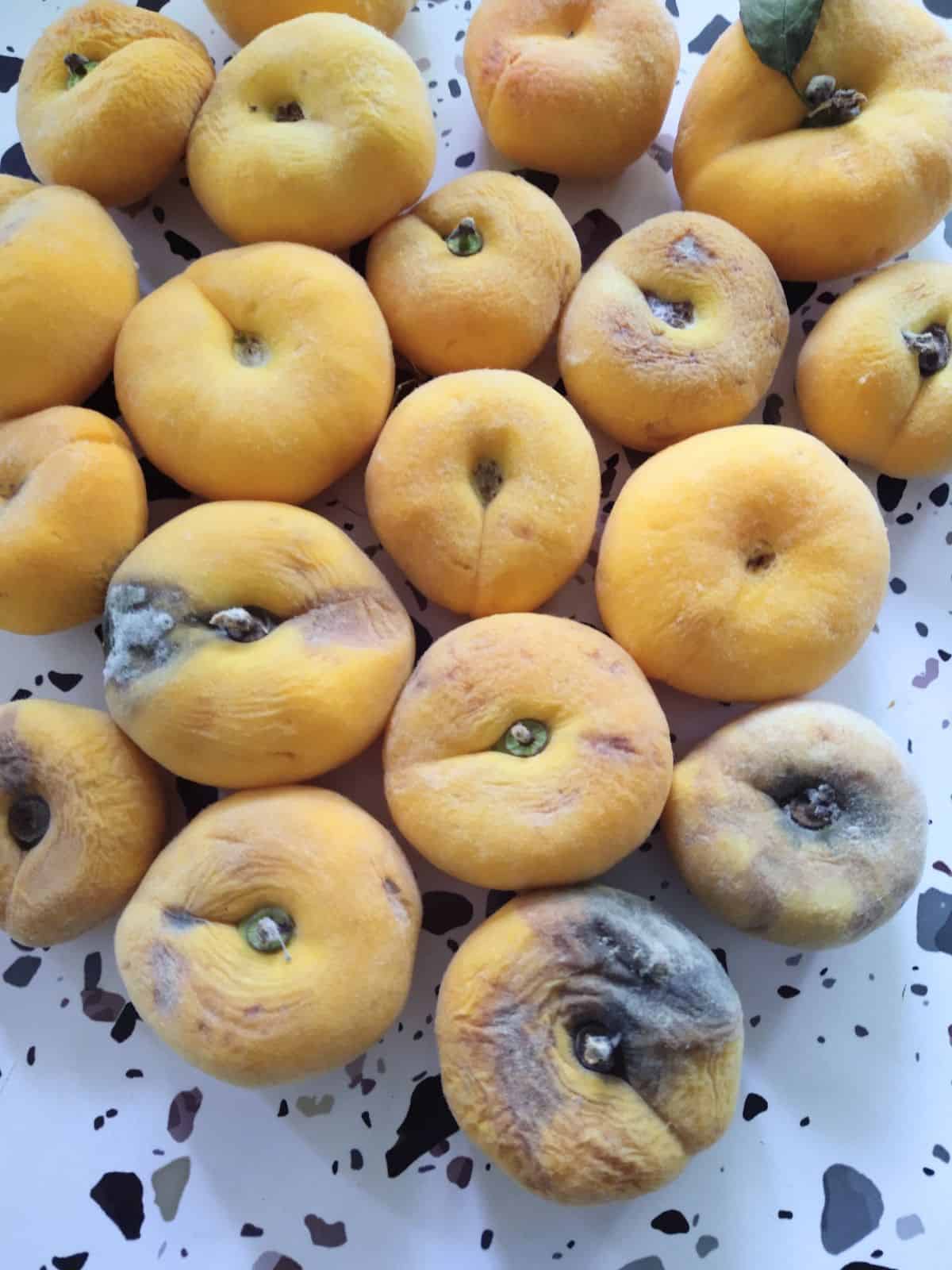
🐘 Wrinkly
Sometimes your peaches will start to wrinkle before they get soft. They are losing moisture. Just as with the brown spots, these peaches won't be at full flavor.
I do find this is more common with donut peaches. Sometimes they have wrinkled on me and still tasted alright. Wrinkled peaches can begin to turn moldy with time (as seen in the photo above).
Verdict - Keep as long as it hasn't gotten too severe and the peach is rotting. Use them in recipes. Taste to see if they taste good enough to just eat.
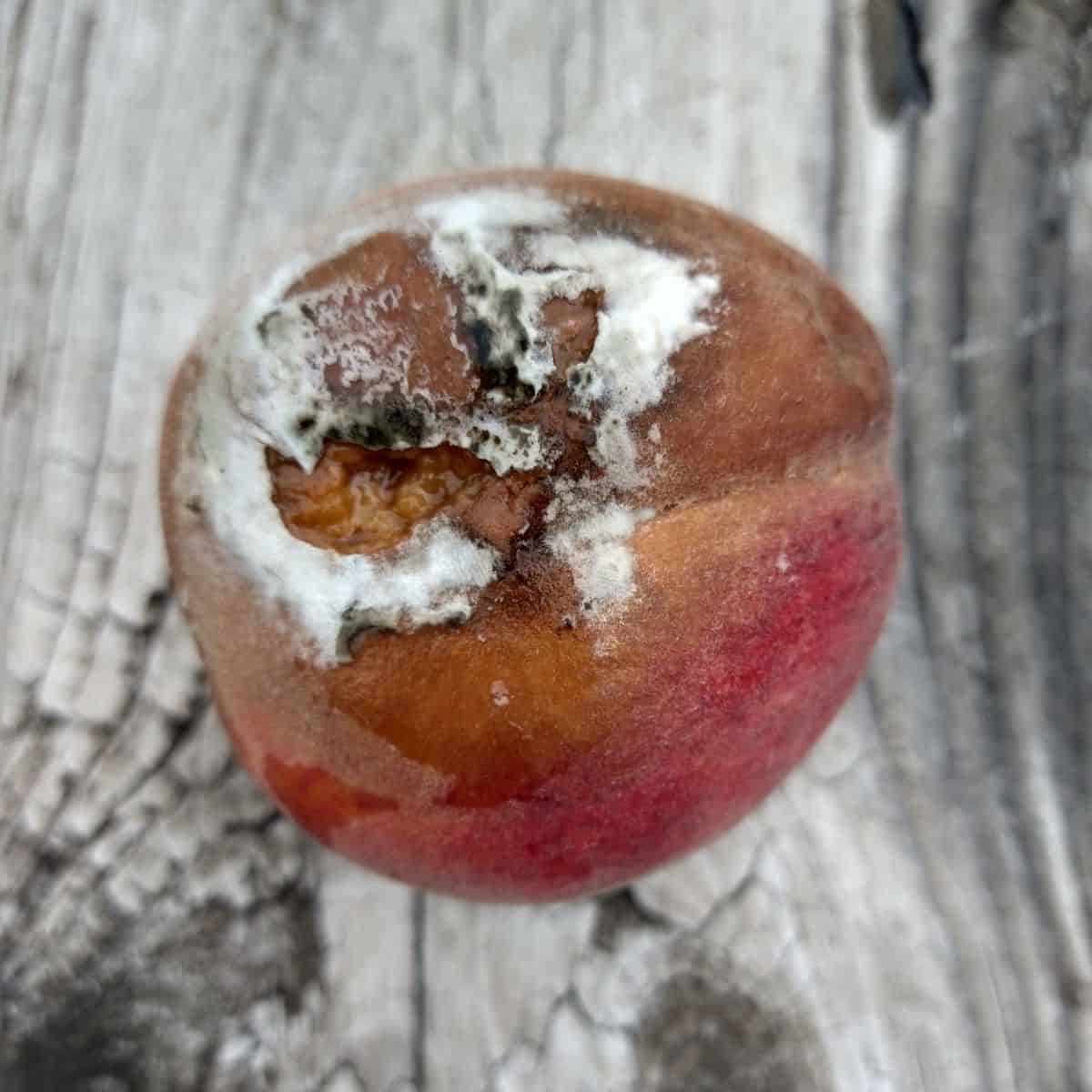
🍄 Moldy
Any of the above problems can lead to mold. Once a peach gets moldy, it's often game over.
If you find a little bit of mold growing on one side of the fruit, you can cut off that part making sure to get it all. I always cut off way more than needed. If the mold is covering a significant part of the peach, I just toss it out.
Verdict - Throw It Out! (or compost it) if more than a small area of the peach has mold on it.
👎 Bad on the Inside
What does a bad peach look like on the inside? Usually you will see some browning from bruising or soft spots. Most of the problems start from the outside and then work there way in.
What you do find sometimes is what's called a split pit. It's where the pit of the peach has split in half. Peaches like this will often but not always have a hole in the stem end. I have seen mold growing on the inside before. In this case I would be more likely to throw the fruit out, but you can still cut enough of the flesh away to still use the fruit.
Verdict - Keep if it's just some browning on the inside near the surface. Cut that part away. Toss peaches that have a lot of mold growing around the pit.
🥫 Canned Peaches
What about canned peaches? How do you know when those are bad? They should never have any bad odors. If they smell fermented or see lots of bubbles throw them out. If you see any mold throw them out.
An already opened can of peaches should last in the fridge for about 5-7 days. Always refrigerate canned peaches once you open them.
🎧 Listen to our podcast episode on - How to Pick the Best Peaches
🔴 Overripe Peaches
A peach can be overripe and still not be bad where you have to throw it out. An overripe peach will be soft, very messy to eat, and the texture may be too soft to be pleasant. But as long as there is no mold you can still use these peaches.
They are still good to use in recipes, especially my homemade peach applesauce that I previously mentioned. You can cook and bake with them. I wouldn't can overripe peaches as they are too hard to peel and canning won't help the texture that is already too far gone.
If your peaches are overripe and still good, don't store them at room temperature anymore, make sure you get them in the fridge or use them immediately. I only put peaches in the fridge when it's absolutely necessary.
➕ More Toss or Keep Posts
Here are more posts in our "Toss or Keep" series. I have mainly done vegetable so far but I am adding fruits to the series, like how to know when raspberries are bad.


Linda
I'm so sorry 🙁